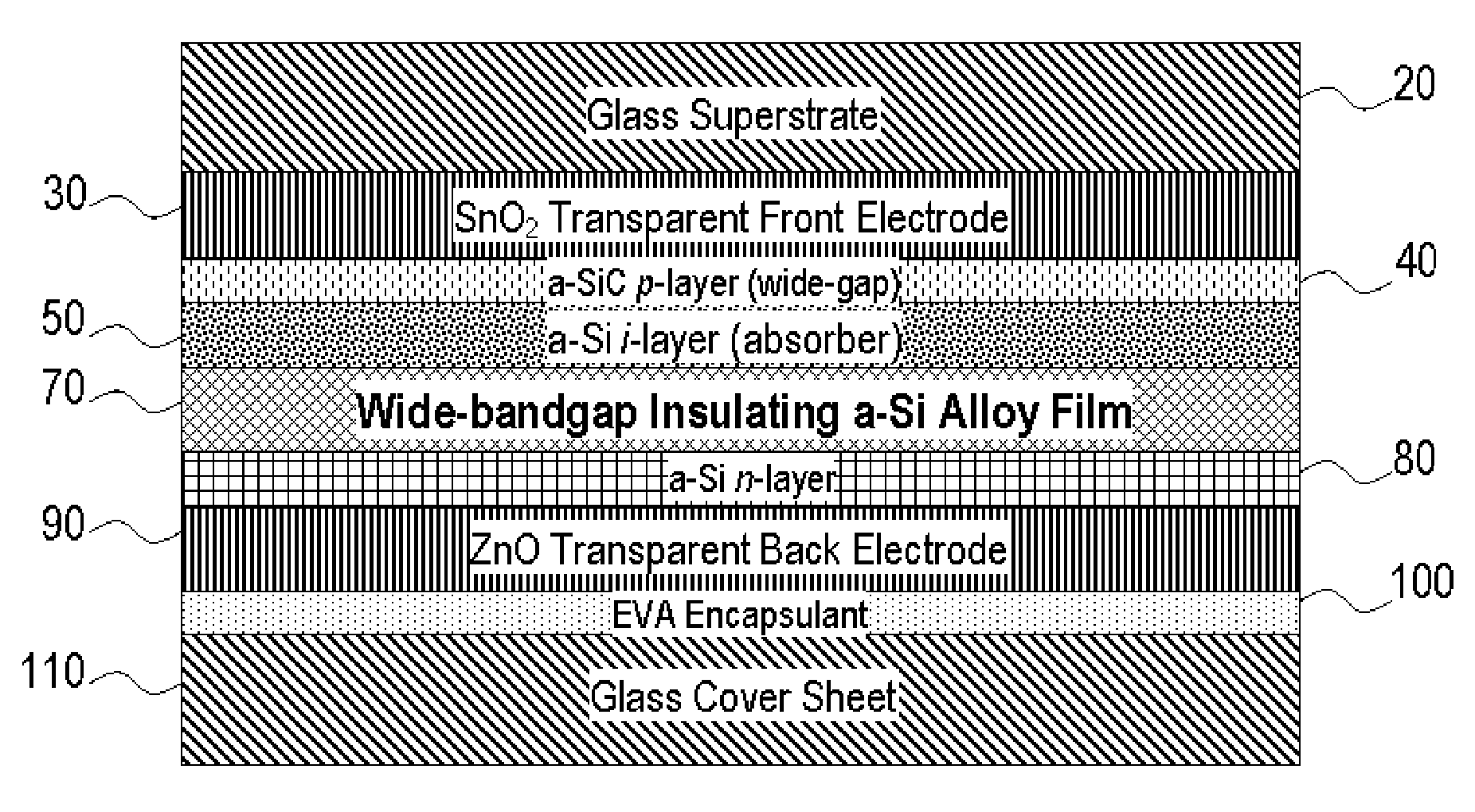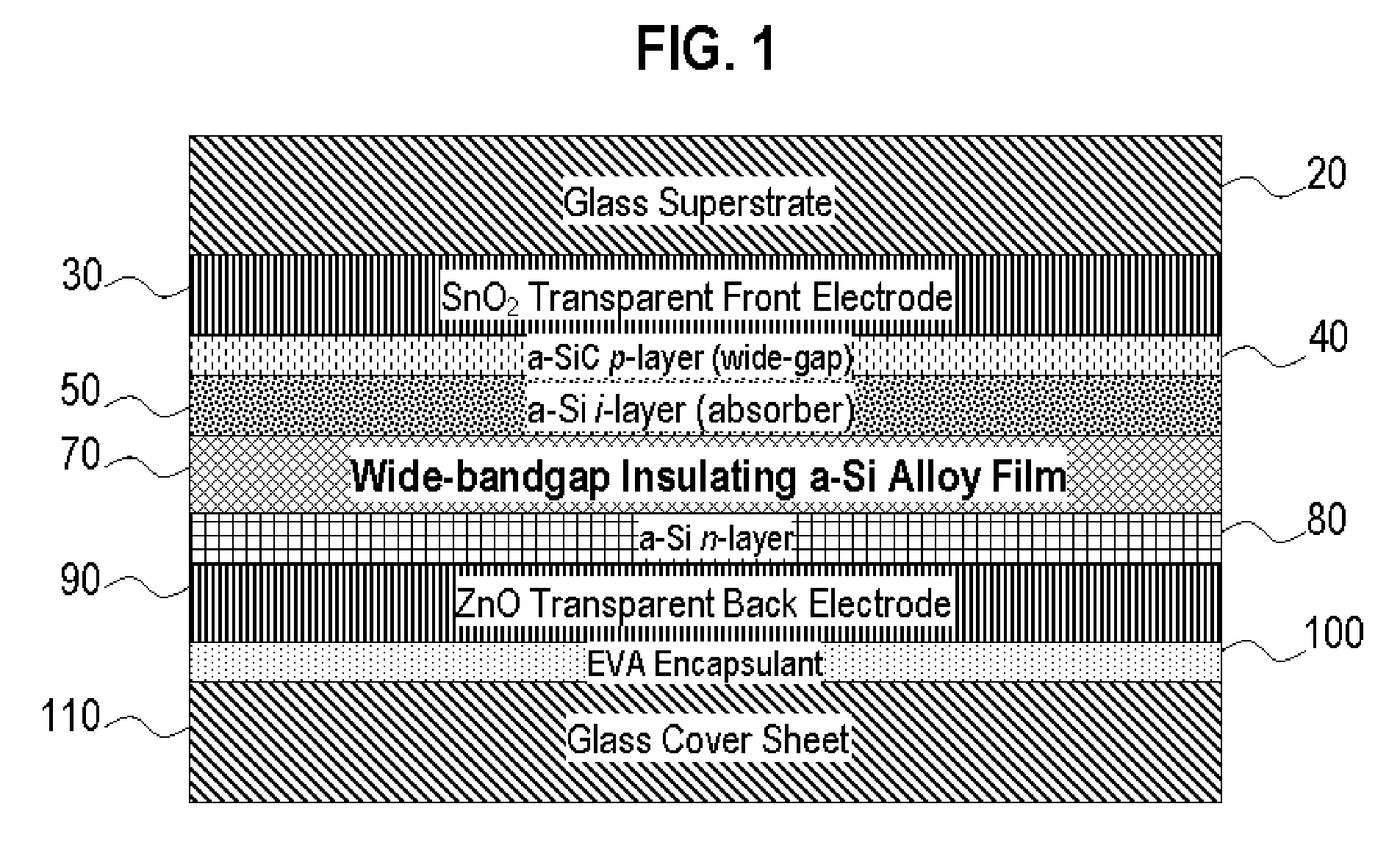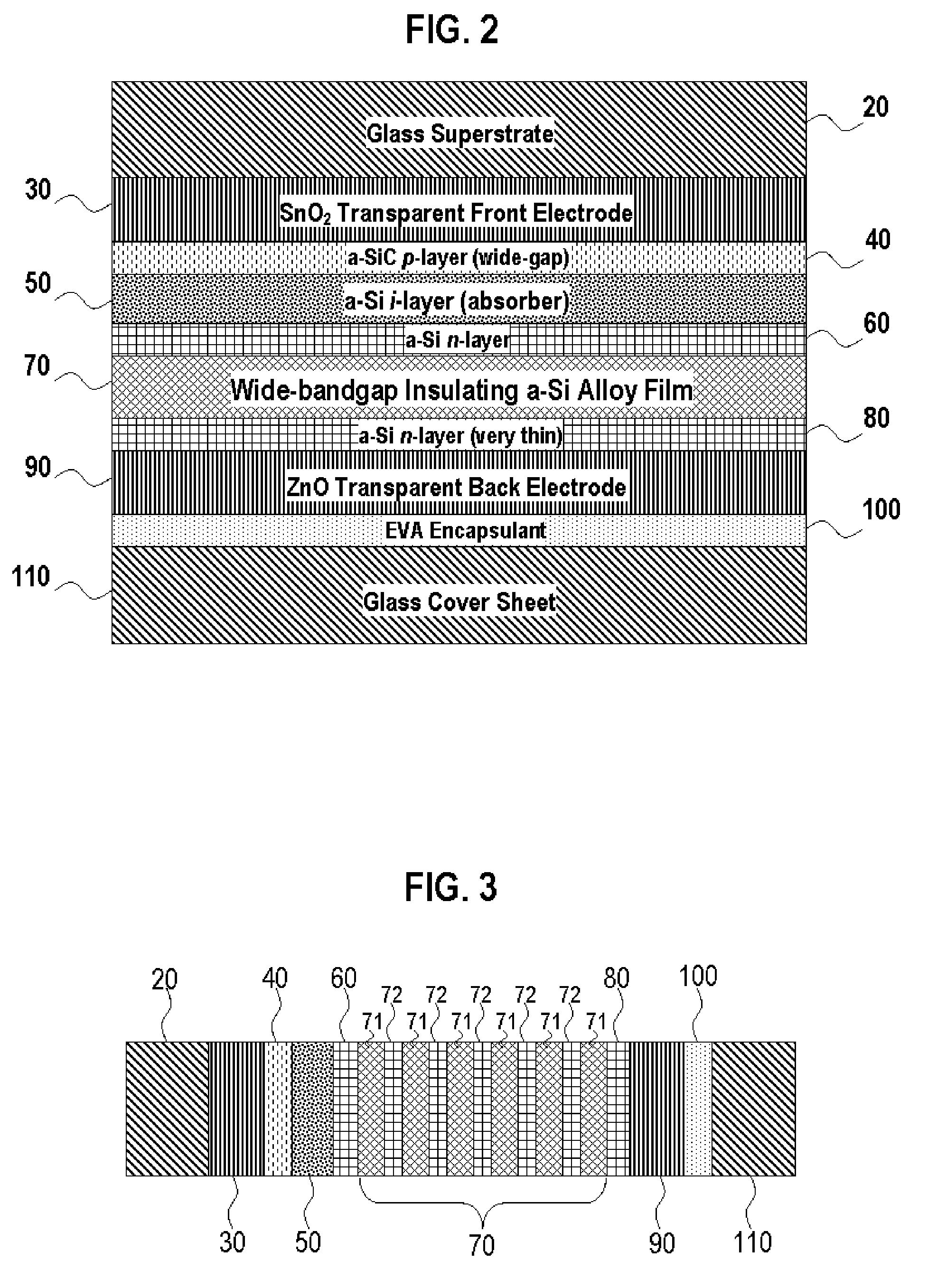Shunt Passivation Method for Amorphous Silicon Thin Film Photovoltaic Modules
a technology of amorphous silicon thin film and photovoltaic modules, which is applied in the direction of sustainable buildings, climate sustainability, semiconductor devices, etc., can solve the problems of high defect density, unacceptably low efficiency of solar cells, and destructive approaches of several folds, and achieve low shunting defects, good output power, and high yield
- Summary
- Abstract
- Description
- Claims
- Application Information
AI Technical Summary
Benefits of technology
Problems solved by technology
Method used
Image
Examples
Embodiment Construction
[0020] The present invention entails a simple, lower-cost, robust and effective scheme for negating shunting defects in photovoltaic (PV) modules containing a thin hydrogenated amorphous silicon (a-Si:H) active absorber-converter layer appropriate for semi-transparent or see-through PV applications. FIG. 1 shows the cross section of a standard single junction, p-i-n type solar cell encapsulated between two glass plates. The solar cell includes flat glass substrate 20 (also known as superstrate in this type of device configuration), transparent front electrode 30 (transparent conductive oxide or TCO), a-Si:H alloy p-layer 40, a-Si:H i-layer 50 (intrinsic amorphous silicon), a-Si:H n-layer 80, transparent back electrode 90, lamination agent 100 (encapsulation medium), and glass cover plate 110. Also shown in FIG. 1 is an optional a-Si:H based shunt-reducing layer 70, deposed between a-Si:H i-layer 50 and a-Si:H n-layer 80. Without the wide-bandgap, insulating, a-Si:H based shunt-reduc...
PUM
 Login to View More
Login to View More Abstract
Description
Claims
Application Information
 Login to View More
Login to View More - R&D
- Intellectual Property
- Life Sciences
- Materials
- Tech Scout
- Unparalleled Data Quality
- Higher Quality Content
- 60% Fewer Hallucinations
Browse by: Latest US Patents, China's latest patents, Technical Efficacy Thesaurus, Application Domain, Technology Topic, Popular Technical Reports.
© 2025 PatSnap. All rights reserved.Legal|Privacy policy|Modern Slavery Act Transparency Statement|Sitemap|About US| Contact US: help@patsnap.com



